Reading List
We hope that this list serves as a resource, and welcome suggestions for additional publications.

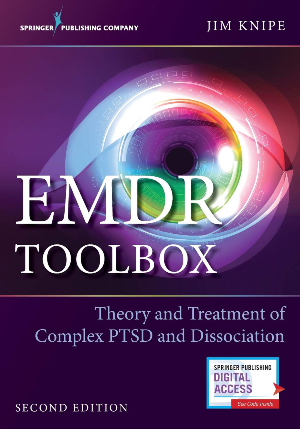
EMDR Toolbox: Theory and Treatment of Complex PTSD and Dissociation: Theory and Treatment of Complex PTSD and Dissociation (Second Edition)
This innovative resource for therapists trained in Standard EMDR delivers a powerful set of EMDR-based “Tools” – useful strategies for helping difficult-to-treat clients with complex emotional problems.
EMDR Toolbox provides an overview of the principal issues in treating these complex emotional problems and describes highly effective methodologies with a wide variety of clinical presentations that originate in or include disturbing traumatic memories. It also describes how to integrate specific EMDR-related interventions with other psychotherapeutic treatments.
Jim Knipe, PhD, 2018

Coping with Trauma-Related Dissociation: Skills Training for Patients and Therapists
This training manual for patients who have a trauma-related dissociative disorder includes short educational pieces, homework sheets, and exercises that address ways in which dissociation interferes with essential emotional and life skills, and support inner communication and collaboration with dissociative parts of the personality. Topics include understanding dissociation and PTSD, using inner reflection, emotion regulation, coping with dissociative problems related to triggers and traumatic memories, resolving sleep problems related to dissociation, coping with relational difficulties, and help with many other difficulties with daily life. The manual can be used in individual therapy or structured groups.
Suzette Boon, Kathy Steele, Onno van der Hart, 2011

Treating Trauma-Related Dissociation: a practical, integrative approach
The book offers an overview of the neuropsychology of dissociation as a disorder of non-realization, as well as chapters on assessment, prognosis, case formulation, treatment planning, and treatment phases and goals, based on best practices. The authors describe what to focus on first in a complex therapy, and how to do it; how to help patients establish both internal and external safety without rescuing; how to work systematically with dissociative parts of a patient in ways that facilitate integration rather than further dissociation; how to set and maintain helpful boundaries; specific ways to stay focused on process instead of content; how to deal compassionately and effectively with disorganized attachment and dependency on the therapist; how to help patients integrate traumatic memories; what to do when the patient is enraged, chronically ashamed, avoidant, or unable to trust the therapist; and how to compassionately understand and work with resistances as a co-creation of both patient and therapist.
Kathy Steele, Suzette Boon, Onno van der Hart, 2017
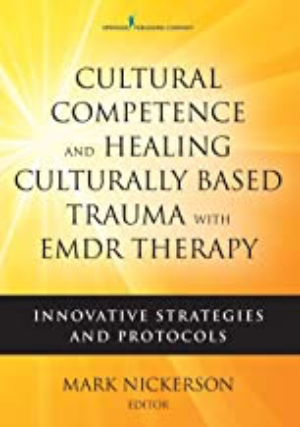
Cultural Competence and Healing Culturally Based Trauma with EMDR Therapy: Innovative Strategies and Protocols
Underscoring the importance of cultural competence, this groundbreaking book focuses on using EMDR therapy with specific populations, particularly those groups typically stigmatized, oppressed, or otherwise marginalized in society. Drawing on social psychology research and theory as well as social justice and social work principles, it delivers general protocols for EMDR intervention for recovery from the internalized effects of cultural mistreatment. Employing best-practice methods for cultural competence as EMDR therapy is introduced to new cultures worldwide, the editor and esteemed EMDR clinician-authors relay their experiences, insights, guidance, and lessons learned through trial and error while adapting EMDR interventions for cross-cultural competency and therapeutic effectiveness
Mark Nickerson, 2016
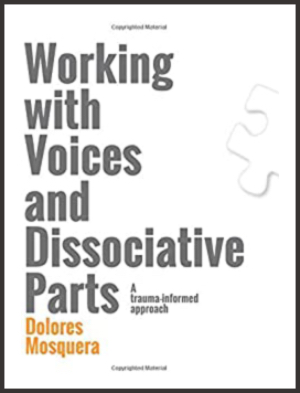
Working with Voices and Dissociative Parts: A trauma-informed approach
The use of a trauma-informed approach creates an effective framework so both therapist and client can understand the importance, the reasons, and the protective goals of the different part of the Self. This helps to keep the right pacing, without hurrying any trauma-processing work, and avoids the reprise of phobic blockages or triggered re-experiencing. It is instead possible to create a relational container that offers safety while “moving forward.” The reader will also find explanations of the application of specific procedures and techniques that come directly from the author’s experience as a trauma-therapist. Five detailed clinical cases follow the first, more theoretical part. They are, in itself, “a book within a book” thanks to the richness of the clinical material and the precise comments of the author, interspersed throughout the text.
Dolores Mosquera, 2019
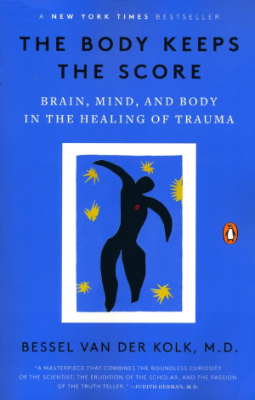
The Body Keeps the Score: Brain, Mind, and Body in the Healing of Trauma
Renowned trauma expert Bessel van der Kolk has spent over three decades working with survivors. In The Body Keeps the Score, he transforms our understanding of traumatic stress, revealing how it literally rearranges the brain’s wiring – specifically areas dedicated to pleasure, engagement, control, and trust. He shows how these areas can be reactivated through innovative treatments including neuro feedback, mindfulness techniques, play, yoga, and other therapies. Based on Dr. van der Kolk’s own research and that of other leading specialists, The Body Keeps the Score offers proven alternatives to drugs and talk therapy – and a way to reclaim lives.
Bessel van der Kolk, 2014

Self-Therapy: A Step-By-Step Guide to Creating Wholeness and Healing Your Inner Child Using IFS, a New, Cutting-Edge Psychotherapy
Understand your psyche in a clear and comprehensive way, and resolve deep-seated emotional issues. Self-Therapy makes the power of a cutting-edge psychotherapy approach accessible to everyone. Internal Family Systems Therapy (IFS) has been spreading rapidly across the country in the past decade. It is incredibly effective on a wide variety of life issues, such as self-esteem, procrastination, depression, and relationship issues. IFS is also user-friendly; it helps you to comprehend the complexity of your psyche. Dr. Earley shows how IFS is a complete method for psychological healing that you can use on your own.Self-Therapy is also helpful for therapists because it presents the IFS model in such detail that it is a manual for the method.
Jay Earley, 2009
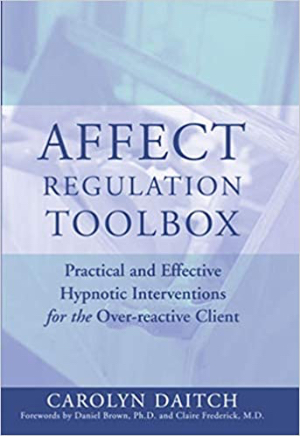
Affect Regulation Toolbox: Practical and Effective Hypnotic Interventions for the Over-Reactive Client
Rational judgment, soothing behavior, and calm observation often go out the window when responding to stress. This book presents hypnotherapeutic skills (including breathing exercises) and other easy-to-learn techniques that help people maintain healthy responses to stress and facilitate effective clinical work and a happier life.
Winner of the Society for Clinical and Experimental Hypnosis (SCEH) Arthur Shapiro Award for Best Book on Hypnosis.
Carolyn Daitch, 2007

Integrative Team Treatment for ATtachment Trauma in Children: Family Therapy and EMDR
Working as a collaborative team, EMDR and family therapists can, together, strengthen the parent-child attachment bond and help to mend the early experiences that drive the child’s behavior. This book, and its accompanying Parent Manual, are intended to serve as clear and practical treatment guides, presenting the philosophy and step-by-step protocols behind the Integrative Team Treatment approach, so both the family system issues and the child’s traumatic past are effectively addressed. You need not be a center specializing in attachment trauma to implement this team model, nor must members of the team practice at the same location. With at least one fully-trained EMDR practitioners as part of the two-person team, any clinician can pair with another to implement this treatment approach, and heal children suffering from attachment trauma.
Debra Wesselmann, Cathy Schweitzer, Stefanie Armstrong, 2014
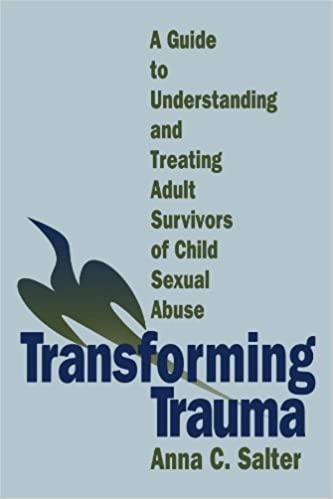
Transforming Trauma: A Guide to Understanding and Treating Adult Survivors of Child Sexual Abuse
Practitioners helping adult survivors of child sexual abuse need to be aware of the thought processes of offenders. The premise of Anna Salter′s major book is that those who do not recognize an internalized perpetrator when they hear one will often be frustrated by the tenacity of the survivor′s self blame.
Primarily oriented towards treating adult survivors, this invaluable book will also be useful for treating sex offenders. It includes discussion of crucial issues such as: what clinicians who treat survivors need to know about sex offenders; the different ways sadistic and nonsadistic offenders think and the resulting different `footprints′ they leave in the heads of survivors; how trauma affects survivors′ world-views;
Anna Slater, 1995
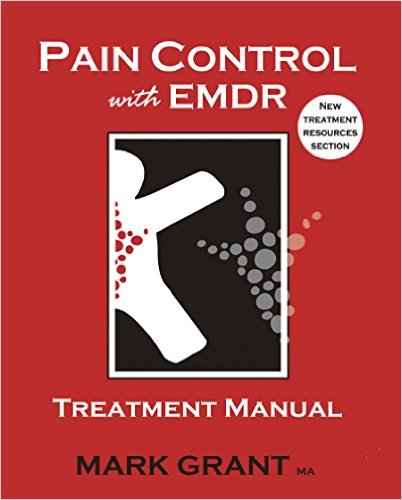
Pain Control with EMDR: Treatment Manual
The 5th revised edition of this research-based manual describes how to use EMDR in the treatment of chronic pain. Includes a review of role of trauma and attachment problems in pain, neurological aspects of pain, Theoretical model of pain based on Accelerated Information Processing Model, step by step EMDR pain protocol, including detailed notes and tips for each stage, key differences between trauma protocol and pain protocol, advice about common blockages and how to deal with them, how to enhance client responsiveness to bilateral stimulation, how to develop strong affect-based resources for coping with on-going pain, adjunctive strategies and resources, assessment tools, information about dissociation and pain, numerous case-examples, and over 30 pages of photocopyable treatment aids and resources. After PTSD, pain is the most researched application of EMDR.
Mark Grant, 2015
